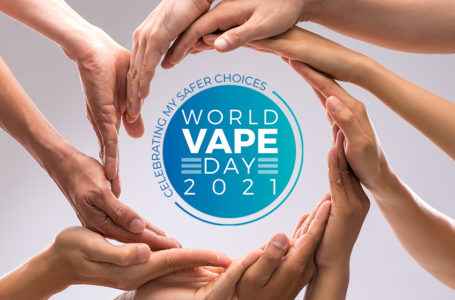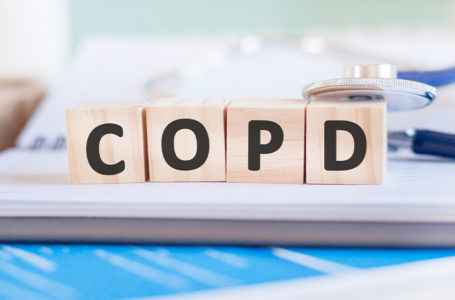Accurate information on nicotine, a non-carcinogenic substance will help smokers make informed decisions, according to public health policy experts who attended an annual forum discussing the future of the tobacco and nicotine industries.
“There is a need to get accurate, scientifically-based information out to people who smoke to help them make the decisions that are right for them and help them quit smoking. We need to figure out how to get accurate, scientifically-based information to smokers,” Karen Gerlach, a regulatory scientist at Womble Bond Dickinson (U.S.) LLP, said in a panel discussion during the Global Tobacco & Nicotine Forum (GTNF) held recently in Washington D.C.
Michael Ogden, a regulatory and industry expert at consulting group Chemular, agreed that there is a lot of misinformation on the Internet about nicotine that prevents smokers from making informed decisions.

Ogden denied that nicotine causes diseases or adversely affects mental ability. “There is no loss of control. It does not impair cognitive function. In fact, it may even enhance it. And nicotine does not produce disease. It is not carcinogenic,” Ogden said.
Gerlach, who has applied and practical experience in all aspects of science from conducting basic laboratory research to applying scientific evidence to advance regulatory decisions and public policy, underscored the need to make available accurate information on nicotine to help millions of smokers quit by switching to lower-risk alternatives such as heated tobacco products and e-cigarettes. These alternatives deliver nicotine without burning tobacco and produce aerosol instead of smoke.
Experts said it is the smoke, and not nicotine, that causes sickness. The process of burning tobacco in cigarettes was found to produce around 7,000 harmful and potentially harmful chemicals. Heated tobacco products heat tobacco, while e-cigarettes heat an e-liquid which may or may not contain nicotine. Both products eliminate combustion and do not burn tobacco.
Ogden said some groups were trying to make nicotine synonymous to smoking and addiction. “A simple lie is far easier to believe than the complex truth, and we are looking at the complex truth here,” he said.
He said some positive effects of nicotine have been discussed in various literature for decades. “Nicotine has a paradoxical effect. Nicotine is a stimulant; it induces pleasure and improves concentration, reaction times and performance on certain tasks. Nicotine can also reduce stress and anxiety. It stimulates and reduces stress in many people,” he said.
Ogen said nicotine is not only found in tobacco products because it can be purified as caffeine to pharmaceutical standards. Nicotine is in nicotine replacement therapy which is sold over-the-counter, he said.
“If nicotine was all that dangerous, I don’t think this would be true, particularly not in over-the-counter medication,” he said.
“We really need information that is easily accessible to people, that gives them these comparative risks,” said Gerlach who has worked in the field of tobacco control for 25 years, with positions in the federal government, a large nonprofit and the private sector.
Gerlach’s expertise includes the design, implementation and reporting on all aspects of post-market surveillance required by regulatory agencies. Her focus is premarket and post-market regulatory submissions for tobacco harm reduction products, including study design, implementation, analysis and reporting.
She said several international studies found that people who thought that e-cigarettes or NRT had higher comparative risks were much less likely to try those products to help them quit.
She said a recent study from the Population Assessment of Tobacco and Health (PATH) report found that not only are people with high risk perceptions of the low-risk products unlikely to try and adopt those and unlikely to use them to switch completely.
“Even if they did switch completely, they were less likely to stay switched, and more likely to return to smoking,” said Gerlac.
Gerlac challenged the nicotine industry and the health regulators to provide accurate information to help smokers.
“I think the role of the industry is to continue to develop high-quality, lower-risk products that are acceptable alternatives to cigarettes for people who smoke cigarettes, and then get those through regulatory process which means conducting high level science,” she said.
“Once they get that authorization, they need to monitor these products in the market and continue to demonstrate they remain appropriate for the protection of public health,” she said.
Gerlac acknowledged that there was a limit on the communication that the industry could make to reach out to more consumers.
“I wish they had a better voice particularly when they got Modified Risk Tobacco Product authorization to be able to speak about that. Consumers need to have that information,” she said. “But the reality right now is that they are not able to do that.”
Gerlac said the Food and Drug Administration (FDA) which received all the scientific evidence presented by the industry should also communicate the risk benefits of lower-risk products to the people.
“They certainly can communicate once they agreed there is a lower risk product. They should be able to communicate with smokers about those products and help them to understand how they may be able to transition to lower-risk products,” she said.
“What they need to do is to utilize some of that communication arm that they have to help people who smoke understand what these products are and how these products might be able to benefit them,” she said.



















